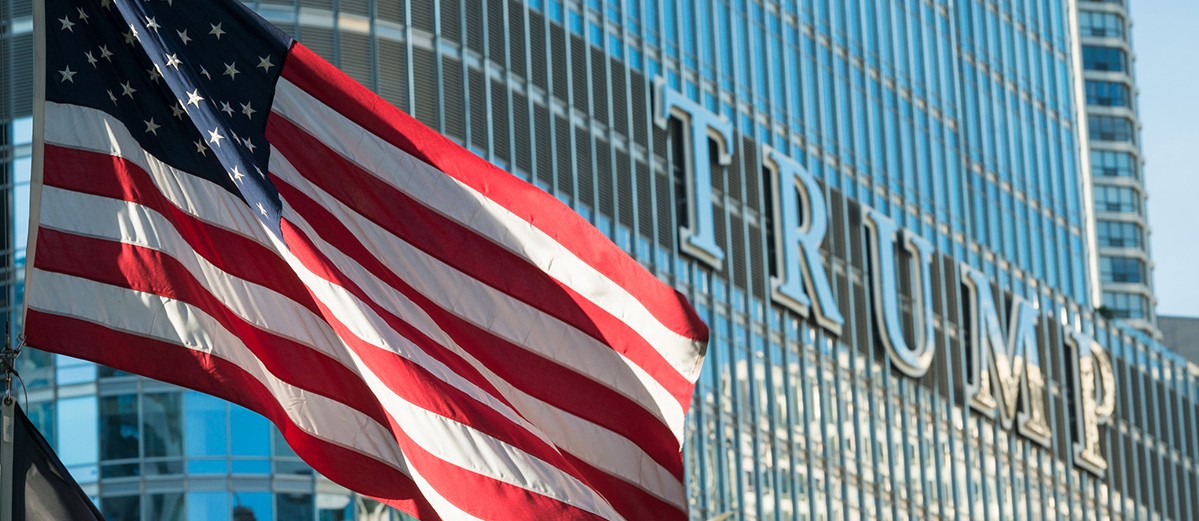

Global markets -
100 days of Trump: Tariffs, taxes, and volatility
The first 100 days of Donald Trump’s second term have been a whirlwind of volatility. Our Director of Global Investment Strategy, Jason Da Silva, looks at the economic impact and where we go from here.
When Trump took office in January, his agenda was clear: immigration, tariffs, tax cuts, and deregulation, and there was a genuine economic optimism surrounding him at the time.
However, tariffs have derailed that enthusiasm. The tariffs announced on 2 April were seismic. Even after they were put on pause, they are the highest tariffs we have seen since the 1930s. Trade is the lifeblood of economic growth and an attack on global trade is in essence an attack on global growth.
The market’s reaction was not surprising. The S&P 500 experienced its worst first 100-day performance under any president since Gerald Ford in 1974. In our view, the subsequent pause in tariffs was a response to the politically intolerable market decline and rise in long-term US interest rates. Consequently, we believe the structural reasons for imposing the tariffs, such as re-industrialisation and reshoring US manufacturing, are likely to be somewhat scaled back.
Revenue, efficiency, and taxes
Tariffs also had another target: raising revenue to address the ever-growing government debt, which is a major issue not only for the US but for the world. In fact, interest payments in the US are now comparable to defence spending levels. However, if tariffs were to remain in place, they would do little to solve this problem. Another significant effort to reduce deficit, the Department of Government Efficiency (DOGE), has fallen short of its promised $2 trillion savings, with the likely figure closer to $150-$200 billion.
Turning to other policies, cutting taxes was another major promise from Trump, which is currently under consideration by lawmakers and is expected to come into effect in the second half of 2025. Deregulation is also expected to become a growing part of the narrative of the White House later in the year.
Immigration has also been a key agenda point and has been successful from a policy perspective. While there are long-term questions about its impact on growth, in the interim, it is likely to help keep the unemployment rate down as the labour supply tightens.
Where do we go from here as it relates to tariffs?
The economic damage will naturally depend on how long these tariffs remain in place and how high they go. From high-frequency data, we can already see a significant drop in business sentiment and consumer confidence. If these trends persist, they are likely to cause a material slowdown — possibly even a recession. It is important to note, the US economy heading into the year was resilient, therefore, a recession would be entirely man-made.
The thing about policy-induced recessions is that they can end just as quickly as they begin. History is a great guide here. In the 1980s, the Carter administration massively tightened credit growth to contain inflation. Growth slowed; markets fell. But just months later, they reversed course, loosened credit, growth rebounded, and markets rallied 35% — with no lasting damage.
And so, the risks are two sided. Trades deals can get struck that lower trade barriers across the globe, which would be a great outcome for the global economy. Alternatively, we have protectionist policies that become the norm and trade with China is permanently impaired.
Impact on US assets
What has been interesting over the first 100 days of Trump's presidency has been the reaction of the dollar and the US bond market. To provide some context, the US dollar has only fallen more than 10% three times in the last decade. Even during Trump's first term, there was a significant decline in the dollar.
The notion that the US could lose its reserve currency status seems exaggerated, as the US dollar still represents roughly 58% of global foreign exchange reserves held by central banks and remains the primary currency for trade. However, the US dollar does have its weaknesses. US growth outperformance and the surge of US tech company share performance have led to a significant inflow into US markets making the currency overvalued and hence vulnerable to a pullback.
The US bond mystery
Lastly, the behaviour of bonds since 2 April has been puzzling. Typically, risk-off events lead to a sharp drop in yields. However, following ‘Liberation Day’, US 10-year yields increased through April. There is no clear explanation for this spike in yields, although fiscal worries and hedge fund de-risking have been cited.
The fiscal deficit story has been prevalent for the past few years, therefore we do not think this has been the reason. Despite this, we believe that at current yield levels, bonds remain an important asset to own. If a recession occurs, bonds are likely to perform well.
Jason’s view
Trump 2.0 has been difficult to navigate. The range of outcomes is quite wide for markets. The most important thing for us is not to be too focused on headlines. The investment theme de jour last year was the continuation of US exceptionalism and in four months that has shifted to the death of the dollar. We suspect that the answer is somewhere in the middle.
Further reading
Decoding Trump 2.0: Markets, policy, and what comes next
Jason da Silva, Director of Global Investment Strategy, explores the economic agenda and global impact of the second Trump administration and offers context and clarity on what has already been a whirlwind presidency.
Trump tariffs: How markets reacted and the impact on the economy
Trump’s ‘liberation day’ tariffs have rattled markets. Find out what it means for the global economy and how we are managing our portfolios.
Subscribe to our latest insights
Sign up to receive insights from our experts and partners, giving you fresh ideas and different perspectives on topics that help you go further. Plus, get exclusive invites to events and webinars.

Related services
Author -

Jason Da Silva
Director, Global Investment Strategy
Jason Da Silva joined Arbuthnot Latham in 2022, as a senior research analyst and in 2023 he was promoted to Director, Global Investment Strategy. He most recently spent four years at boutique asset manager Obsidian Capital focused on direct equities, fixed income, commodities, and currencies. Previously, he worked at EY, where he became a Chartered Accountant before rotating into the EY corporate finance division. Jason holds both a CA(SA) and a CFA.
DISCLAIMER
This communication should be considered a marketing communication. It has not been prepared in accordance with legal requirements designed to promote the independence of investment research. It is for information purposes only and does not constitute advice, a solicitation, recommendation or an offer to buy or sell any security or other investment or banking product or service. You should seek professional advice before making any investment decision. The value of investments, and the income from them can fall as well as rise, and may be affected by exchange rate fluctuations. Investors could get back less than they invest. Past performance is not a reliable indicator of future results. The tax treatment of investments depends upon individual circumstances and may be subject to change.
The contents of this communication are based on opinions or conditions as at the date of writing and may change without notice. To the extent permitted by law or regulation, no warranty of accuracy or completeness of this information is given and no liability is accepted for its use or reliance on it.